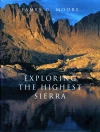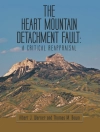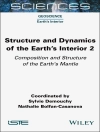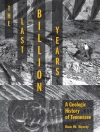This book envisages a multi-proxy approach using stable isotopes, geochemical proxies, magnetic susceptibility and associated biotic events for paleoclimatic and paleoenvironmental interpretations of the Mesozoic sedimentary record of India. Mesozoic rocks of India record abnormal sea level rise, greenhouse climate, intensified volcanism, hypoxia in seawater, extensive black shale deposition, and hydrocarbon occurrence. The Mesozoic has also witnessed mass extinction events, evolution of dinosaurs, and breakdown of the supercontinent Pangea and the formation of Gondwana. Although the Mesozoic geology of India has witnessed significant progress in the last century, literature survey reveals a huge gap in knowledge regarding sequence stratigraphy, chemostratigraphy and key geological events. A synthesis of sedimentological, paleontological and chemical data is included to presenting a comprehensive understanding of the Indian Mesozoic record to students, researchers and professionals.
Cuprins
Course of Events that Constrained Evolution of the Fluvial-dominated Bhuj Formation, Kutch, India on Top of Marine Shelf.- Radiation of Flora and Fauna in the Triassic Succeeding the end Permian crisis: Evidence from the Gondwana Sediments of Peninsular India.- Ichnology and Sedimentology of Mesozoic Sediments in Rajasthan.- Mineralogical and Chemical Characteristics of Bole Beds in Maharashtra.- Paleoenvironmental Implications of Mesozoic Ironstones in Kutch.
Despre autor
Santanu Banerjee is a Professor at the Department of Earth Sciences, Indian Institute of Technology Bombay. He obtained Ph.D. degree from Jadavpur University, Kolkata, in 1997. Santanu does research in sedimentology and petroleum geology. His research areas cover sedimentary facies and basin analysis, microbially induced sedimentary structures, sequence stratigraphy, recent sedimentary environments around Gulf of Cambay for outcrop analogues of subsurface reservoirs, provenance and tectonic settings, glauconite formation in sequence stratigraphic context and Jurassic black shale in Kutch. He is the Associate Editor in Chief of the Journal of Palaeogeography. He is in the editorial board of the Arabian Journal of Geosciences, SN Applied Sciences and Journal of Earth Systems Science. He is the Vice-President of the Indian Association of Sedimentologists. He has supervised many research projects sponsored by Government agencies and oil companies. He has published more than 100 research articles in journals and edited four books.
Subir Sarkar is currently Professor in the Department of Geological Sciences, Jadavpur University, Kolkata India. He obtained his Ph.D. from Jadavpur University in 1990. He has more than 25 years of experience in teaching and about 30 years in research. Dr. Sarkar has worked in different Proterozoic basins in India and his scientific interests are in the areas of sequence stratigraphy, biosedimentology, and basin analysis. With a special interest in the record of early life, he is currently studying the influence of microbial mats on Precambrian sedimentation. He is in the editorial board of Journal of Palaeogeography. He has published more than 100 research articles in peer-reviewed national and international journals and conference proceedings. He has also published 16 book chapters and edited four books.












